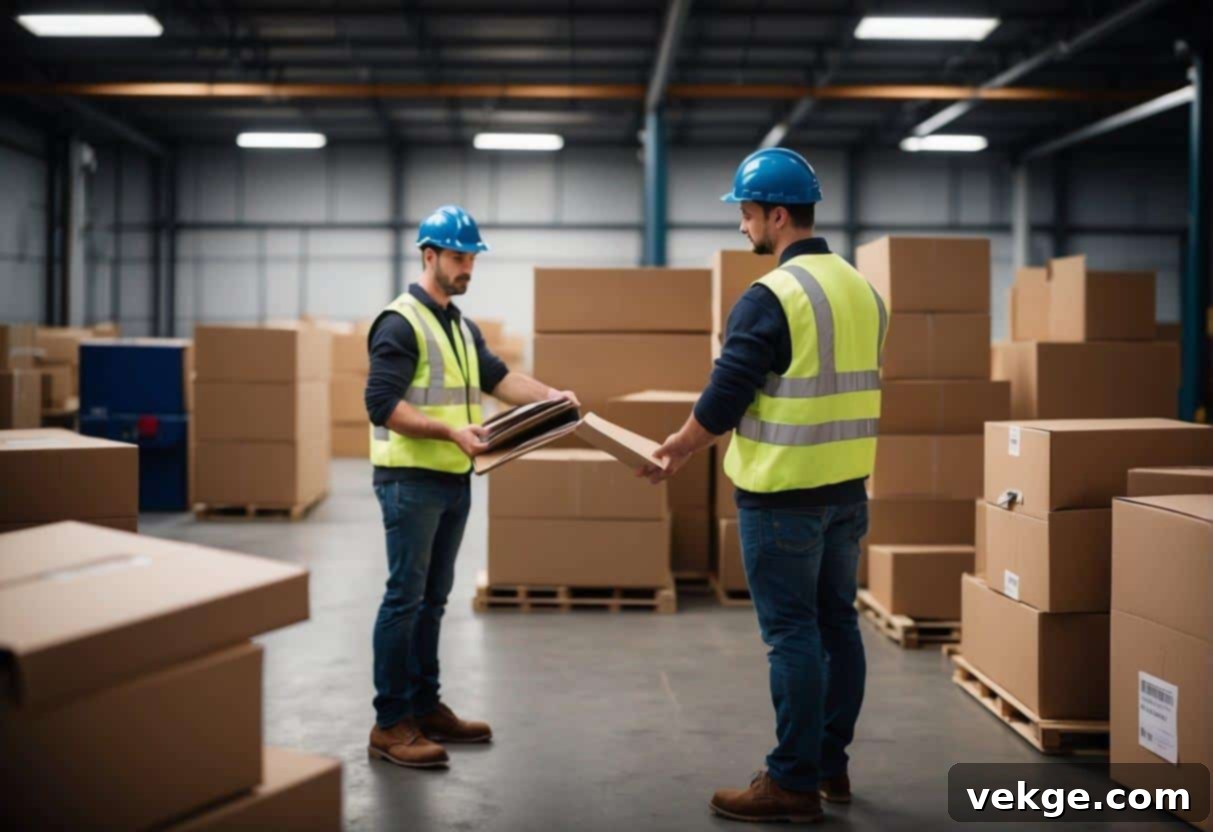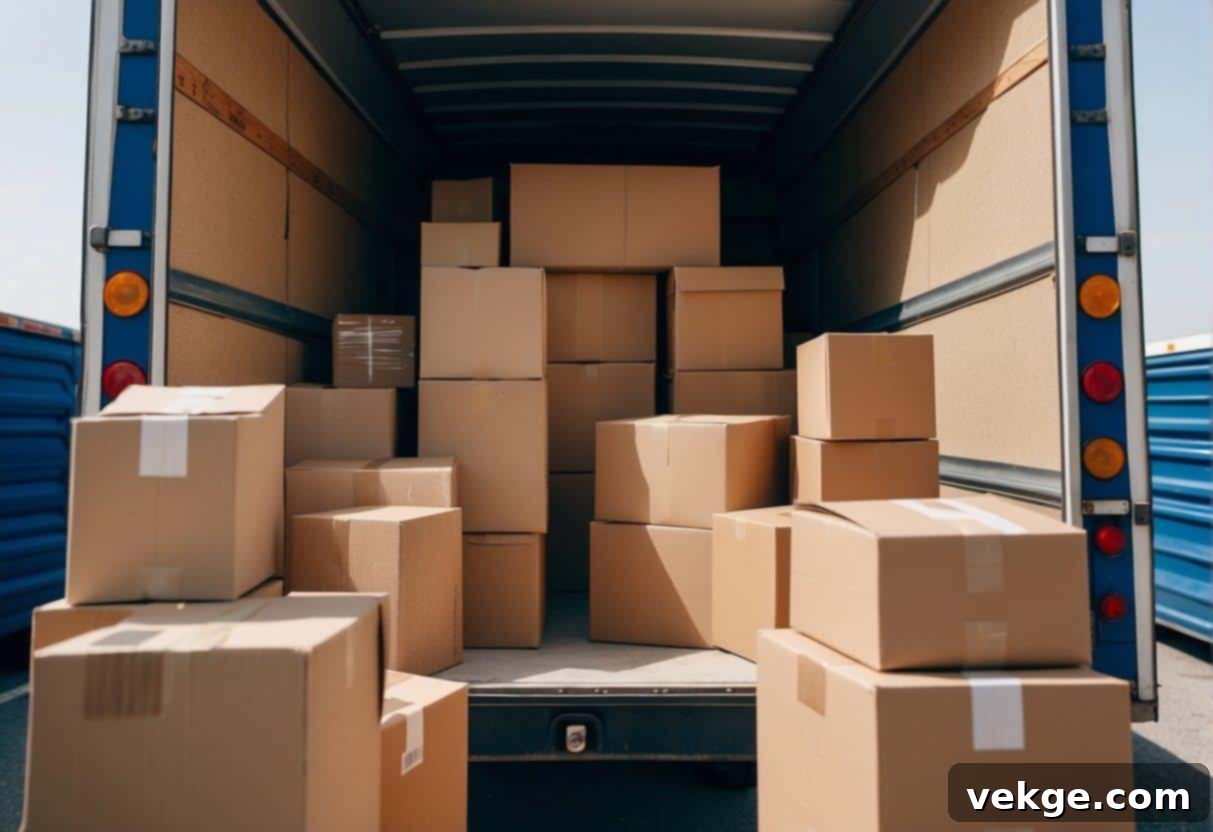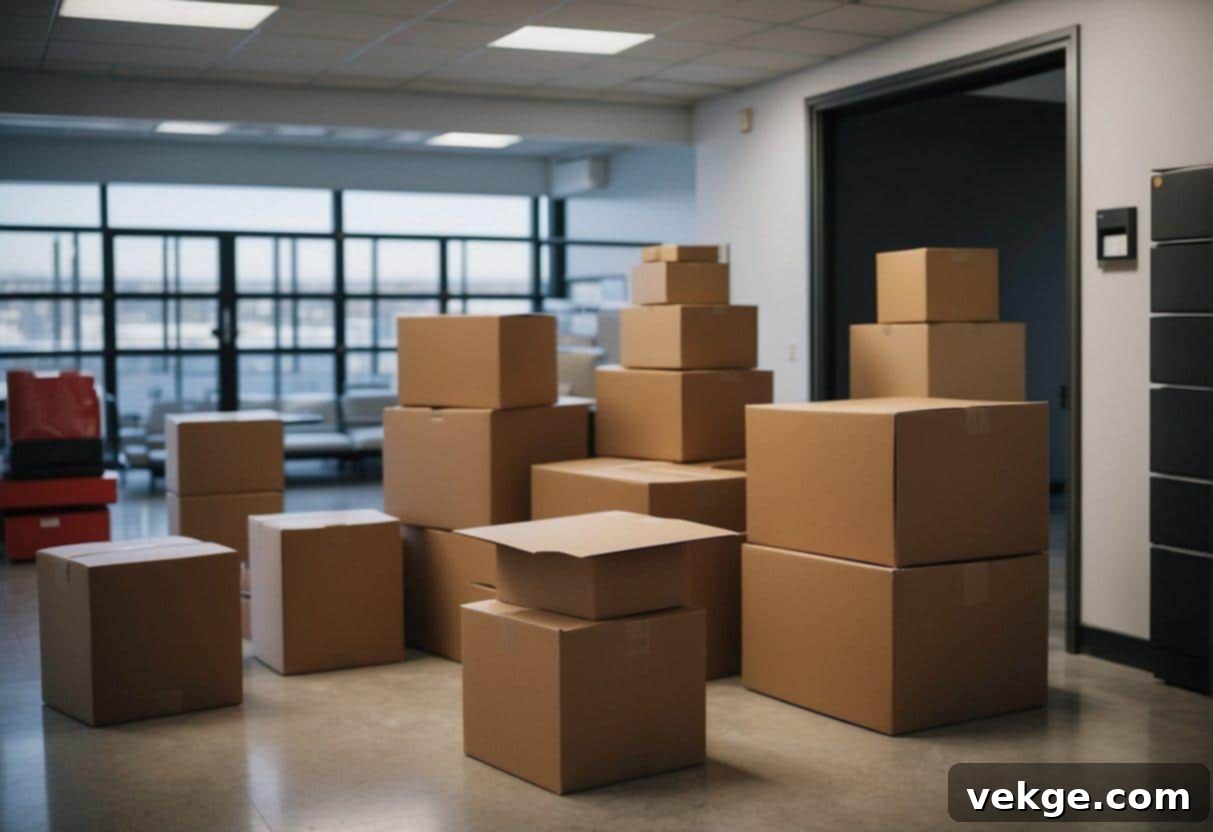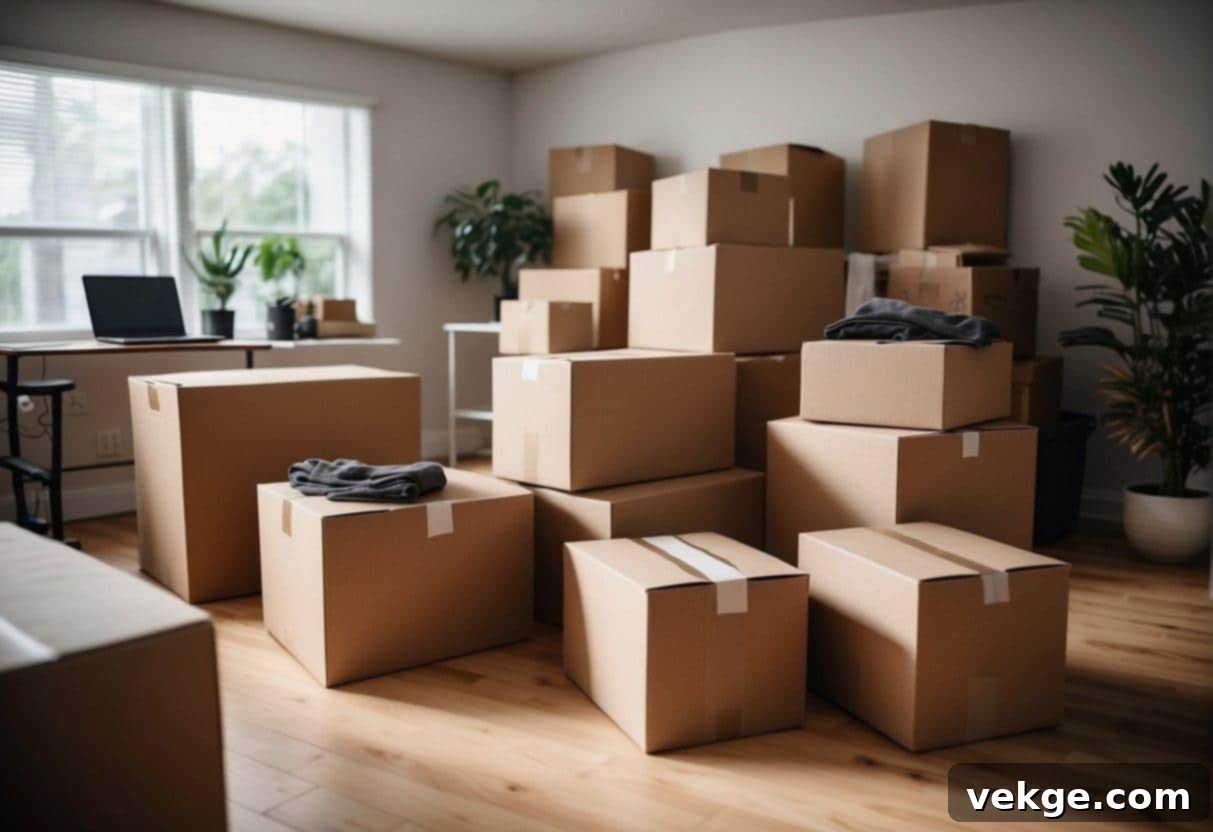Your Essential Guide to a Stress-Free Local Move: Avoiding Common Mistakes and Ensuring Success
Moving, even if it’s just across town, often presents a deceptive level of complexity. Many individuals underestimate the meticulous planning and extensive organization required, leading to unforeseen challenges and significant stress. What seems like a simple transition can quickly become a chaotic ordeal if not approached with foresight and precision. This comprehensive guide aims to illuminate the most frequent local moving mistakes and provide actionable strategies to circumvent them, ensuring your relocation is as smooth and efficient as possible.
One of the most common pitfalls is a severe lack of early preparation. The tendency to procrastinate on sorting, decluttering, packing, and organizing belongings is a primary driver of last-minute panic. Delaying these crucial steps can inevitably result in a rushed, disorganized, and incredibly stressful moving day, where critical details are easily overlooked. To truly set the stage for a seamless transition, it’s advisable to engage professional movers who can offer a clear plan well in advance, ideally as soon as the decision to move has been made. For expert assistance and a meticulously planned relocation, you can visit this site to hire professional movers. Utilizing a detailed moving checklist is indispensable for tracking tasks, deadlines, and ensuring that no vital step is forgotten as your moving date draws near.

Another frequent oversight involves failing to adequately anticipate the logistical requirements inherent in a local move. Essential actions, such as securing parking permits for the moving truck at both your current and new residences, or reserving elevator access in apartment buildings, are often forgotten until it’s too late. This negligence can lead to frustrating delays, costly fines, or even a complete standstill on moving day. It’s crucial to research and fulfill all necessary permits and reservations well in advance to avoid these common logistical headaches.
Furthermore, many people inadvertently make the critical mistake of packing non-allowable items, such as flammable liquids, corrosive chemicals, aerosols, or even perishable foods. Beyond posing significant safety risks to both your belongings and the moving crew, transporting such materials is often against the law and could result in movers refusing service. It is absolutely vital to be aware of these regulations and meticulously prepare your items accordingly, ensuring all prohibited substances are properly disposed of or handled separately.
To execute a local move effectively and without undue stress, it is paramount to recognize and actively avoid these common pitfalls. A keen eye for detail, diligent scheduling, proactive communication, and strict compliance with safety and legal requirements form the bedrock of a truly successful local relocation. By respecting the inherent complexity of the task at hand and preparing thoroughly, you can transform a potentially overwhelming experience into a well-managed and positive transition to your new home with minimal issues.
Foundation for Success: Meticulous Planning and Preparation
Effective planning and preparation are not merely advisable; they are foundational to orchestrating a seamless and smooth local moving process. By dedicating sufficient time and effort to creating a detailed moving checklist, proactively securing quotes from reputable moving companies, and systematically decluttering your possessions, you lay the groundwork for a truly stress-free and organized relocation experience.
Crafting Your Comprehensive Moving Checklist
A meticulously constructed moving checklist serves as your essential roadmap to an organized and efficient move. This isn’t just a simple list; it should be an exhaustive enumeration of all tasks, carefully categorized by timelines. Think in terms of “8 weeks prior,” “1 month prior,” “2 weeks prior,” and “1 week prior,” ensuring that no minor or major detail is ever overlooked. Items on your checklist should span a wide range of responsibilities, from acquiring adequate packing supplies like boxes, tape, and bubble wrap, to scheduling critical utility transfers, updating your address with the postal service, notifying banks and subscription services, arranging for pet care, and even planning school transfers for children. A detailed checklist empowers you to monitor progress, delegate tasks, and maintain control throughout the entire moving journey.
Selecting the Right Moving Partner: Securing Quotes From Reputable Companies
It is absolutely crucial to obtain detailed quotes from multiple reputable moving companies. This strategic approach allows you to comprehensively compare various services offered, understand different insurance options, and meticulously evaluate costs. Begin requesting these quotes well in advance—ideally 2-3 months before your desired moving date—to avoid the inevitable rush and premium prices associated with last-minute bookings. When comparing, look beyond just the price; consider the company’s reputation, licensing, insurance coverage (valuation coverage options), customer reviews, and whether they offer in-home estimates to ensure accuracy and transparency.
The Art of Decluttering and Organization
Decluttering is a vital, transformative step in the moving preparation process that many underestimate. Before a single box is packed, you should systematically sort through all your belongings, making clear decisions about what to keep, what to donate, what to sell, and what to discard. This process not only significantly reduces your moving load, thereby potentially lowering moving costs, but also profoundly streamlines the unpacking process at your new home. Organizing items by category and designated room as you declutter can facilitate a more logical, efficient, and ultimately less overwhelming packing and unpacking experience, allowing for a fresh start in your new space.
Smart Strategies for Stress-Free Packing

Effective packing is more than just putting items into boxes; it is a fundamental pillar of a successful move. It plays a critical role in protecting your cherished possessions from damage, significantly streamlines the unpacking process, and ensures that essential items are readily accessible when you need them most. Let’s delve into targeted techniques and best practices for intelligent packing.
Safeguarding Your Valuables: Using Appropriate Packing Materials for Fragile Items
When packing fragile items, selecting the right materials is not merely important—it is absolutely crucial for their protection. High-quality bubble wrap, generous amounts of packing paper or newsprint (ink-free, if possible), and sturdy, double-walled boxes are non-negotiable for delicate belongings. Each fragile item should be wrapped individually, with ample cushioning placed around and between items within the box. Consider the “dish pack” method for plates and bowls, or custom crating for exceptionally delicate or valuable artwork. Crucially, mark these boxes clearly and boldly as “Fragile” on all sides, alerting movers to handle them with the utmost care and reminding yourself during unpacking.
The Power of Precision: Labeling Boxes for Efficient Unpacking
A systematic and clear labeling system contributes immensely to unpacking efficiency and can save you hours of searching. Every single box should be clearly labeled with its primary contents (e.g., “Kitchen – Pots & Pans,” “Master Bedroom – Linens”) and the specific room it belongs to in your new home. To further enhance quick identification and streamline placement, consider utilizing a color-coding system. For example:
- Kitchen: Blue labels or tape
- Bedroom (Master): Green labels or tape
- Living Room: Red labels or tape
- Bathroom: Yellow labels or tape
This organized approach not only simplifies the task of directing movers where to place boxes but also helps you prioritize which boxes to open first, allowing you to quickly set up essential areas.
Your Go-To Bag: Building an Essentials Box (or First-Night Kit)
An “Essentials Box” (or several, if needed) is your lifeline for the first 24-48 hours in your new home. This critical box should contain all items you will need immediately upon arrival, before you even start unpacking. Typical contents include toiletries, prescription medications, basic tools (screwdriver, hammer), a change of clothes for each family member, phone chargers, snacks, a roll of toilet paper, a basic first-aid kit, important documents, and perhaps even a coffee maker and cups. This box should always be packed last and unloaded first, ideally traveling with you in your personal vehicle. Clearly label it as “Essentials – Do Not Pack in Truck” to ensure it remains accessible and is not misplaced amidst the other moving boxes.
Seamless Execution on Moving Day

Moving day itself can be a whirlwind of activity, often fraught with potential issues if your meticulous plans are not executed with careful attention. Addressing safety precautions, actively working to minimize delays, and handling your most valuable possessions with extra care are all critical components to ensuring a truly stress-free transition from your old home to your new one.
Prioritizing Safety: Ensuring Precautions are Taken
Prioritizing safety throughout the moving process significantly reduces the risk of injury and preventable accidents for everyone involved. Both you and your movers should adhere to strict safety guidelines. One should always use appropriate lifting techniques (lift with your legs, not your back), keep pathways completely clear of any obstacles, and ensure that any equipment used—such as dollies, hand trucks, or ramps—is in excellent working condition. It’s highly advisable for anyone participating in the physical aspect of the move to wear protective clothing, including gloves to prevent scrapes and sturdy, closed-toe footwear to safeguard against accidental harm from dropped items. Furthermore, ensure children and pets are safely away from the moving activity.
- Proper Lifting: Always bend at the knees, keep your back straight, and use your leg muscles to lift heavy objects.
- Clear Pathways: Remove all potential tripping hazards from walkways, hallways, and staircases. Secure loose rugs and power cords.
- Communication: Maintain clear and consistent communication with your moving team regarding heavy or fragile items.
Mastering Logistics: Avoiding Delays and Last-Minute Problems
Efficient time management is absolutely crucial on moving day to prevent last-minute rushes, which inevitably cause stress, disorganization, and potential delays. The day before the move, perform a final double-check of the readiness of all packed items. Confirm the exact arrival time with your moving company and ensure that the area around your residence is clear and accessible for the moving truck to park without obstruction. Have all essential documents readily available, and prepare a designated “command center” for the day. Having a contingency plan for unexpected issues can also be a lifesaver.
- Final Checklist Review: Systematically tick off all completed tasks as moving day approaches and on the day itself.
- Essentials Box Accessibility: Keep your “Essentials Box” in a clearly marked, easily accessible location, separate from items being loaded onto the truck.
- Appliance Preparation: Ensure refrigerators and freezers are defrosted, cleaned, and dried, and washing machines are drained and secured.
Protecting Your Prized Possessions: Handling Fragile and Valuable Items with Care
Delicate items, irreplaceable valuables, and highly sensitive belongings should be given special consideration. These items should be packed with extreme security and labeled unmistakably to prevent any damage during transit. Utilize a combination of bubble wrap, ample packing paper, and robust, sturdy boxes. For particularly fragile items like artwork or antiques, consider investing in specialized crates or discussing custom packing solutions with your movers. For high-value items such as jewelry, important documents, or sentimental objects, it is often best to transport these personally, in your own vehicle, rather than entrusting them to the moving company.
- Premium Packing Materials: Bubble wrap, foam padding, packing peanuts, and sturdy, double-walled boxes are indispensable for breakables.
- Explicit Labeling: Clearly mark boxes containing breakables as “Fragile” on all sides and indicate which side should remain “This Side Up.”
- Personal Transport: Safely transport irreplaceable documents, cash, jewelry, and small electronics in your personal vehicle.
Settling In: Post-Move Considerations

Once the moving truck has departed and the last box has been brought into your new residence, the immediate focus gracefully shifts to establishing a comfortable, functional, and welcoming household. Two critical post-move tasks demand immediate attention: ensuring all essential services are connected and taking a moment to reflect on your entire moving experience to provide valuable feedback.
Establishing Your New Home: Setting Up Utilities and Essential Services
Upon your arrival at the new residence, setting up and confirming the operation of all utilities takes absolute precedence. You need to ensure that essential services such as electricity, water, natural gas, internet, and other necessary connections (like trash collection and sewage) are fully operational to comfortably transition into your new home. A systematic approach to this critical task will prevent unnecessary delays and discomfort:
- Proactive Contact: Contact all relevant utility companies well in advance of your move-in date (ideally 2-3 weeks prior) to schedule connection dates. Confirm service activation for the day you move in or the day before.
- Account Management: Ensure all previous utility accounts at your old address are officially closed or successfully transferred to avoid being billed for services you no longer use.
- Internet and Cable: Schedule installation appointments for internet and cable services as soon as possible, as these often have longer lead times.
- Mail Forwarding: Don’t forget to set up mail forwarding with the postal service to ensure no important mail is missed.
Refining the Experience: Reviewing the Moving Process and Submitting Feedback
Reflecting on your entire moving process and providing constructive feedback is an invaluable step, beneficial for both you as the homeowner and for the moving company you hired. Taking the time to do this allows you to consolidate your experience and helps others make informed decisions in the future. You should:
- Compose a Comprehensive Review: Draft an honest and detailed review of the services you received. This should cover aspects like punctuality, the professionalism of the crew, the care taken with your belongings, communication throughout the process, and pricing transparency. Such reviews are incredibly helpful for future clients seeking reliable movers.
- Direct Feedback Submission: Submit your feedback directly to the moving company. They can utilize this information to identify areas for improvement, recognize outstanding performance, and continuously enhance their service quality.
Accurate and thoughtful feedback not only supports the growth and improvement of service providers but also plays a vital role in maintaining high industry standards by holding movers accountable for the quality of their work. Your input contributes significantly to a better moving experience for everyone.
By diligently adhering to these strategies and proactively addressing potential challenges, your local move can indeed be a remarkably smooth and positive experience. Preparation is key, allowing you to settle into your new home with confidence and peace of mind.
